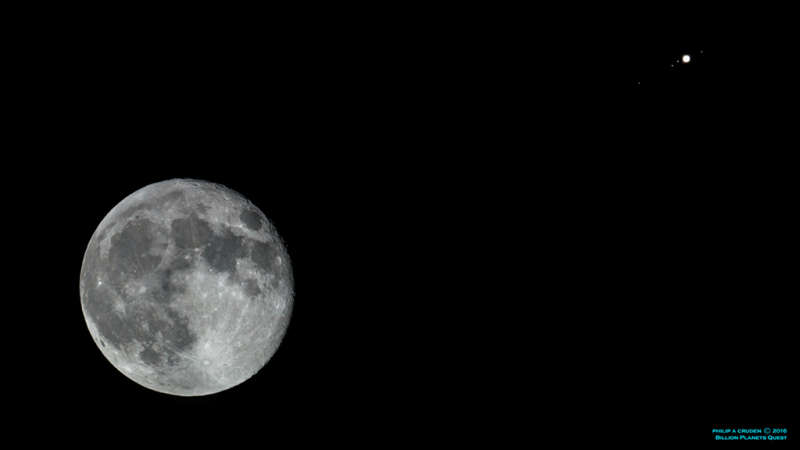
|
Credit & Copyright: Phillip A Cruden
Explanation:
Some of the Solar System's largest moons rose together
on February 23.
On that night, a twilight pairing of a waning gibbous Moon
and Jupiter was captured in this sharp
telescopic field of view.
The composite of short and long exposures reveals the familiar
face of our fair planet's own large natural satellite, along
with a line up of the ruling gas giant's four Galilean moons.
Left to right, the tiny pinpricks of light are
Callisto,
Io,
Ganymede, [Jupiter], and
Europa.
Closer and brighter, our own natural satellite appears to loom large.
But Callisto, Io, and Ganymede are actually larger than Earth's Moon,
while water
world Europa is only slightly smaller.
In fact, of the Solar System's six
largest
planetary satellites, only Saturn's moon Titan is missing
from the scene.
|
January February March April May June July August September October November December |
| ||||||||||||||||||||||||||||||||||||||||||||||||
NASA Web Site Statements, Warnings, and Disclaimers
NASA Official: Jay Norris. Specific rights apply.
A service of: LHEA at NASA / GSFC
& Michigan Tech. U.
Based on Astronomy Picture
Of the Day
Publications with keywords: Moon - Io - Ganymede - Europa
Publications with words: Moon - Io - Ganymede - Europa
See also:
